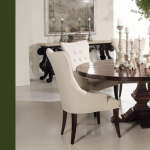As an Amazon Associate I earn from qualifying purchases.
The art of gardening has been practiced for centuries, with early examples dating back to ancient civilizations such as the Babylonians and Egyptians. Over time, gardening has evolved from a simple practice of growing food and herbs to a form of artistic expression known as garden art.
In the Middle Ages, European monasteries often featured elaborate gardens filled with symbolic plants and flowers. These gardens were designed not only for their beauty but also for their religious significance. The famous Hanging Gardens of Babylon, one of the Seven Wonders of the Ancient World, were a prime example of the fusion of architecture and nature in garden design.
During the Renaissance, garden design reached new heights with the creation of elaborate parterre gardens. These formal gardens featured intricate patterns of hedges, flowers, and pathways, often symbolizing the harmony of man and nature. Italian Renaissance gardens, such as the Villa d’Este in Tivoli, showcased the use of water features, statuary, and architectural elements to create a sense of grandeur and beauty.
In the 18th century, English landscape gardens emerged as a reaction against the formalism of French and Italian gardens. Designed to mimic the natural beauty of the English countryside, these gardens featured rolling lawns, winding pathways, and carefully placed plantings. Influential landscape designers such as Capability Brown and Humphry Repton emphasized the importance of creating a harmonious relationship between the architecture and the surrounding landscape.
The 19th and 20th centuries saw the rise of modern garden art, with the emergence of new styles and movements such as Arts and Crafts, Art Nouveau, and Modernism. These movements rejected the ornate and formal designs of the past in favor of a more naturalistic and organic approach to garden design. Influential designers such as Gertrude Jekyll and William Robinson advocated for the use of native plants, wildflowers, and informal plantings to create a sense of natural beauty in the garden.
Today, modern garden art continues to evolve, with designers incorporating elements of sustainability, ecology, and technology into their designs. Green roofs, rain gardens, and edible landscapes are just a few examples of how garden design has adapted to the challenges of the 21st century. Artists and designers are also exploring new mediums and techniques, such as living walls, vertical gardens, and interactive installations, to create innovative and inspiring garden spaces.
The evolution of modern garden art reflects our changing relationship with nature and our desire to create meaningful and beautiful outdoor spaces. As we look to the future, it is clear that the art of gardening will continue to inspire and enrich our lives, connecting us to the natural world and the beauty of the landscape.
Amazon and the Amazon logo are trademarks of Amazon.com, Inc, or its affiliates.
 yonohomedesign.com Garden and Interior Design Ideas
yonohomedesign.com Garden and Interior Design Ideas

















